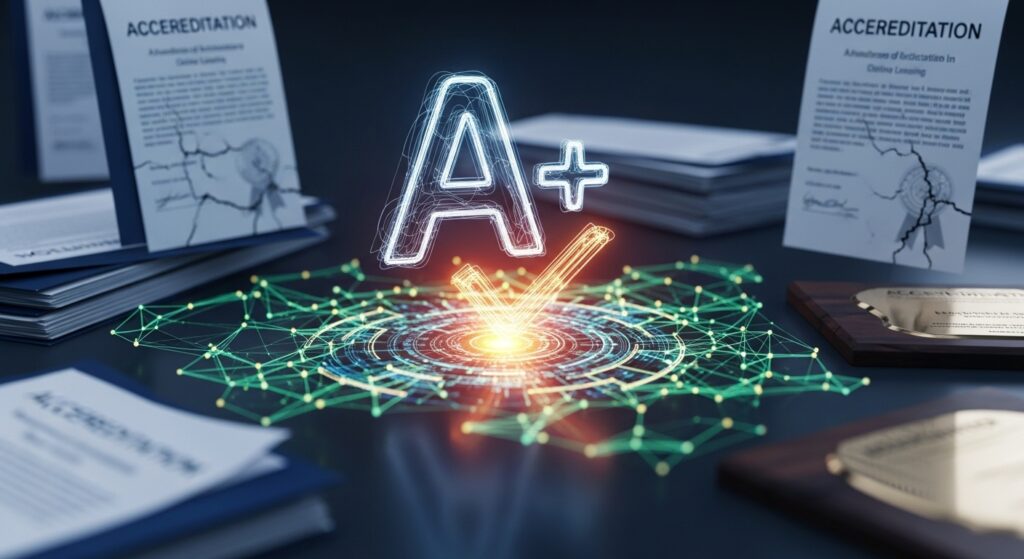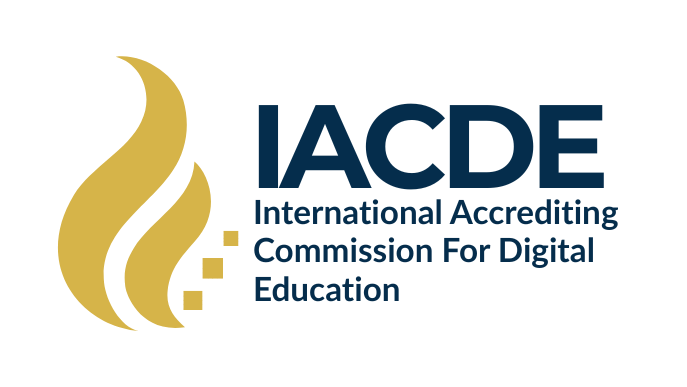Introduction
Across the world, universities and training providers are rapidly moving online. From micro-credentials to full degree programs, digital learning is reshaping the landscape of higher education. Yet the systems meant to assure educational quality—the accreditation agencies themselves—are still catching up.
Traditional accreditation models were built for an era of campuses, classrooms, and in-person faculty oversight. As the E-Learning Quality Network (ELQN) notes, “existing traditional accreditation systems, primarily designed for physically-based institutions, must evolve to accommodate the emerging e-learning models effectively.” (ELQN, 2024)
The International Accrediting Commission for Digital Education (IACDE) was founded precisely to address this challenge—offering transparent, rigorous, and globally relevant quality standards for a digital age.
1. Why Existing Models Are Under Pressure
During the COVID-19 pandemic, higher-education systems were forced to migrate thousands of programs online overnight. Research by Nworie (2025) found that most institutions “had not undergone formal evaluation under distance-education frameworks,” exposing major gaps in quality assurance (OJDLA, 2025).
Traditional accreditors emphasize site visits, facility inspections, and campus governance structures. These tools simply do not capture the realities of virtual classrooms, asynchronous instruction, adaptive learning platforms, or AI-driven analytics now common in education.
The WICHE Cooperative for Educational Technologies (WCET) further warns that “accreditation’s traditional roots remain strong, but expectations for accrediting bodies to act in a more regulatory, technology-aware manner have grown.” (WCET, 2022)
2. Key Drivers of Change
Technological Acceleration: AI-powered tutoring, learning analytics, and blockchain credentialing demand new evaluation criteria (ELQN, 2024).
Digital Readiness: Martinelli & Khairiah (2024) highlight that online accreditation success depends on infrastructure, trained human resources, and embedded quality cultures (ResearchGate, 2024).
Global Mobility: The OECD Centre for Skills emphasizes that learners increasingly cross borders digitally, requiring coherent international benchmarks (OECD Workshop Summary, 2023).
3. How IACDE’s Model Responds
IACDE’s framework is intentionally built for flexibility and rigor. Key features:
- Eligibility criteria for digital and hybrid delivery formats that value access and inclusivity.
- Peer-reviewed self-studies and annual monitoring cycles to ensure continuous improvement.
- Transparent governance and appeals processes published openly on our Policies & Standards page.
- Alignment with international reference frameworks (INQAAHE, CHEA IQG, ISO 21001) to support global recognition.
- Digital-age criteria covering faculty support, learner analytics, data protection, and platform accessibility

4. Implications for Institutions
Institutions seeking modern accreditation should:
- Align learning outcomes and assessment methods across modalities.
- Provide evidence of technology-enhanced student support and academic integrity systems.
- Demonstrate continuous data-driven improvement.
- Link policies to recognized international quality benchmarks.
5. Conclusion
Accreditation is no longer about buildings and campuses—it’s about systems and impact. Accreditors like IACDE redefine trust by auditing how learning is designed, delivered, and measured online.
Ready to start your accreditation journey? Visit Get Accredited to download our handbook and begin your application.



Comments are closed